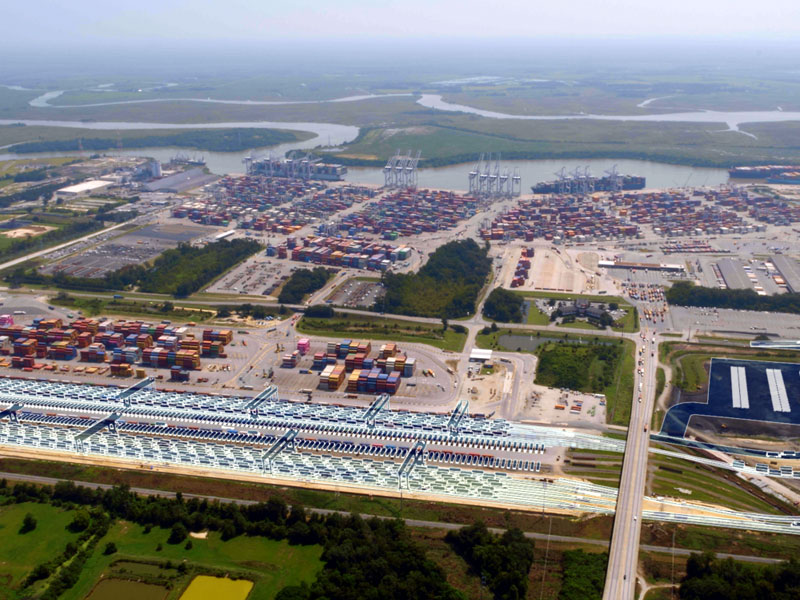The Port of Savannah, already the U.S. Southeast’s busiest intermodal gateway, is significantly bolstering its rail infrastructure to support swift, reliable links throughout much of the nation.
“A major focus for the Georgia Ports Authority in 2020 is staying ahead of exponential growth in demand for intermodal rail service,” said Griff Lynch, the GPA’s executive director. “Larger vessels transiting the Panama Canal have reduced the overall transportation cost of moving cargo to inland destinations, pushing the market frontier for East Coast ports farther west.”

The project, dubbed the Mason Mega Rail Terminal, aims to allow the GPA to build additional 10,000-foot long unit trains on terminal without disrupting nearby traffic.
“This capability, in turn, will enable direct rail service to major Southeast and Midwestern markets – areas that offer opportunity for significant market share growth for East Coast ports,” Lynch said.
While the first phase of the Mason Mega Rail Terminal is not slated to open until this spring, with full completion of the facility by the end of 2020, Savannah’s rail volumes already have been dramatically increasing.
Between its fiscal year ended June 30, 2017, and its fiscal 2019, the Port of Savannah saw its rail cargo volume grow more than 35 percent, bringing its total number of rail moves to 506,700 in its latest fiscal year. That is more than twice the rate of GPA’s overall growth in container trade, which blossomed by 16 percent over the same two-year period.
The Mason Mega Rail expansion is adding 97,000 feet of new rail track at Savannah’s Garden City Terminal, bringing total trackage to nearly 180,000 feet, while increasing the number of working tracks from eight to 18.
The rail expansion will improve efficiency and double terminal rail lift capacity to 2 million TEUs per year, Lynch said. Unit train capacity on terminal is to build density into the system and enable rail providers CSX Transportation and Norfolk Southern to deliver faster, more frequent rail service to markets along the Mid-American Arc from Memphis to Chicago and the Ohio Valley.
The GPA already features 27 trains per week to and from Mid-American Arc locations. Added capacity will provide new options, delivering reliable, consistent access throughout the Southeast and Midwest, according to Lynch.
Lynch said Savannah currently offers the fastest westward transit times in the South Atlantic region, including overnight service to a five-state area – Alabama, Georgia, Florida, North Carolina and South Carolina. Savannah is just a bit more than 1,000 miles from Chicago by rail – comparable to other ports that are north of Savannah, but also farther east.
“Customers at the Port of Savannah moving containers by rail enjoy superior speed and reliability, with most cargo moving from vessel to rail within 24 hours,” Lynch said. “Consistent, congestion-free terminal services cut expenses and speed delivery directly to the customer.”
Savannah rail providers Norfolk Southern and CSX operate double-stack container trains along the entire route between Savannah and the Midwest. As the first port of call on many Panama Canal shipping services, Lynch said, the Port of Savannah furnishes additional assurance of on-time cargo arrival.



